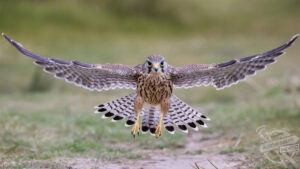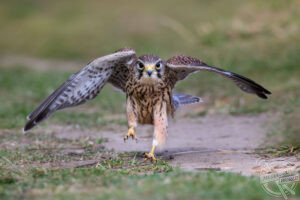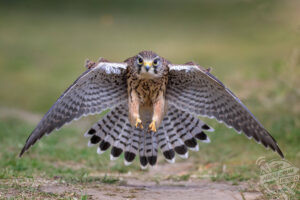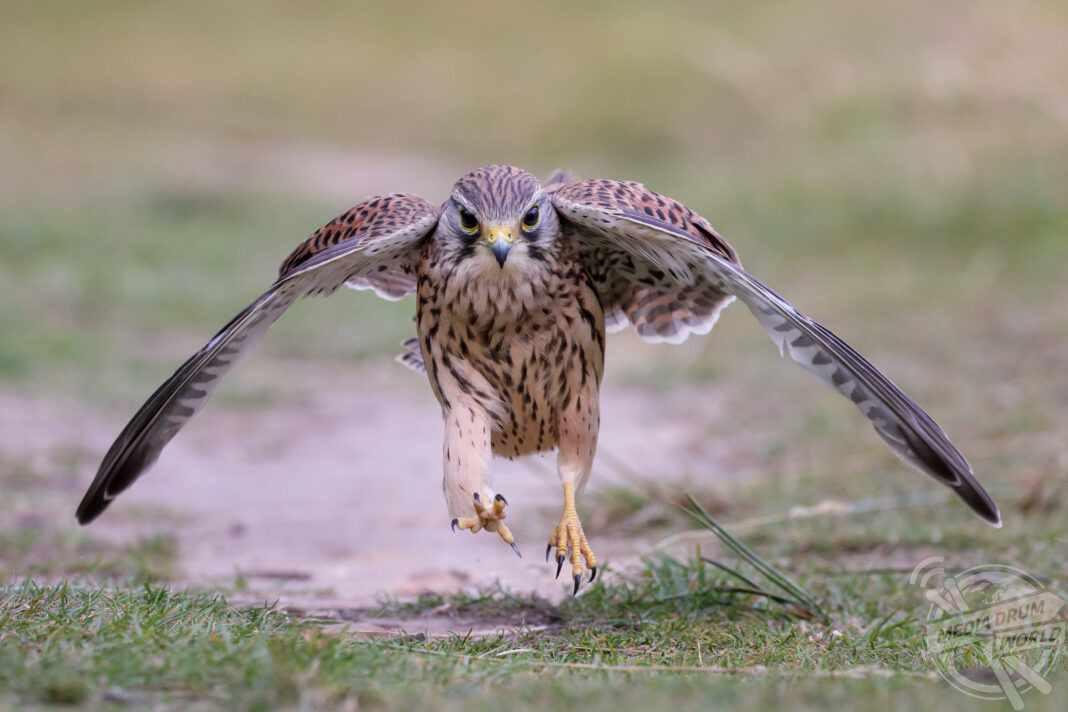EXCLUSIVE
By Freya Coombes
STUNNING images show a young kestrel marching across Middlesex grass in search of snacks as it begins its journey in the wild.
One image shows the Kestrel chick tucking in its wings and marching across the ground, looking for insects to munch on.

Kestrels are identifiable from their hunting method where they hover at a height of 35 to 65 feet before swooping down onto their prey from above. The kestrel typically weighs around 180 grams and measures 36 centimetres in length.
These images were captured by programme manager, banker and photographer Edwin Godinho (52) in Bushy Park in Middlesex using a Canon EOS R5 camera.
“We were following a pair of kestrels that had a nesting hole in Bushy Park, Hampton,” said Edwin.

“We followed the pair from the time they were young to the time they fledged from their nesting hole.
“Experience over the years has taught us; the first week to ten days after fledging the chicks stay close to the nesting hole, around the trees nearby.
“They wait for their parents to return back with food regularly. Over time the trips start becoming less frequent deliberately by the parents to force the chicks to explore.
“This gives us the chance to lie in a discreet location usually with a bag hide or in the grass waiting for the chicks to come to the ground.
“Over those seven days, we placed ourselves in the direction of the best light and took great shots as the chicks came to the ground often in search of grasshoppers, crickets and an occasional failed attempt to catch lizards and birds.

“I love the research that goes into learning about the species and their behaviour. Then coming up with a plan, putting yourself in a place where you have the best chance.
“The pleasure in just observing wildlife even without taking a single shot, I find most rewarding and good for the mind.
“A piece of advice to people starting out in wildlife photography is don’t chase wildlife but spend a few days first just learning their behaviour. Then just wait for them to come to you.
“The best shots are when you capture natural behaviour.”
ENDS










